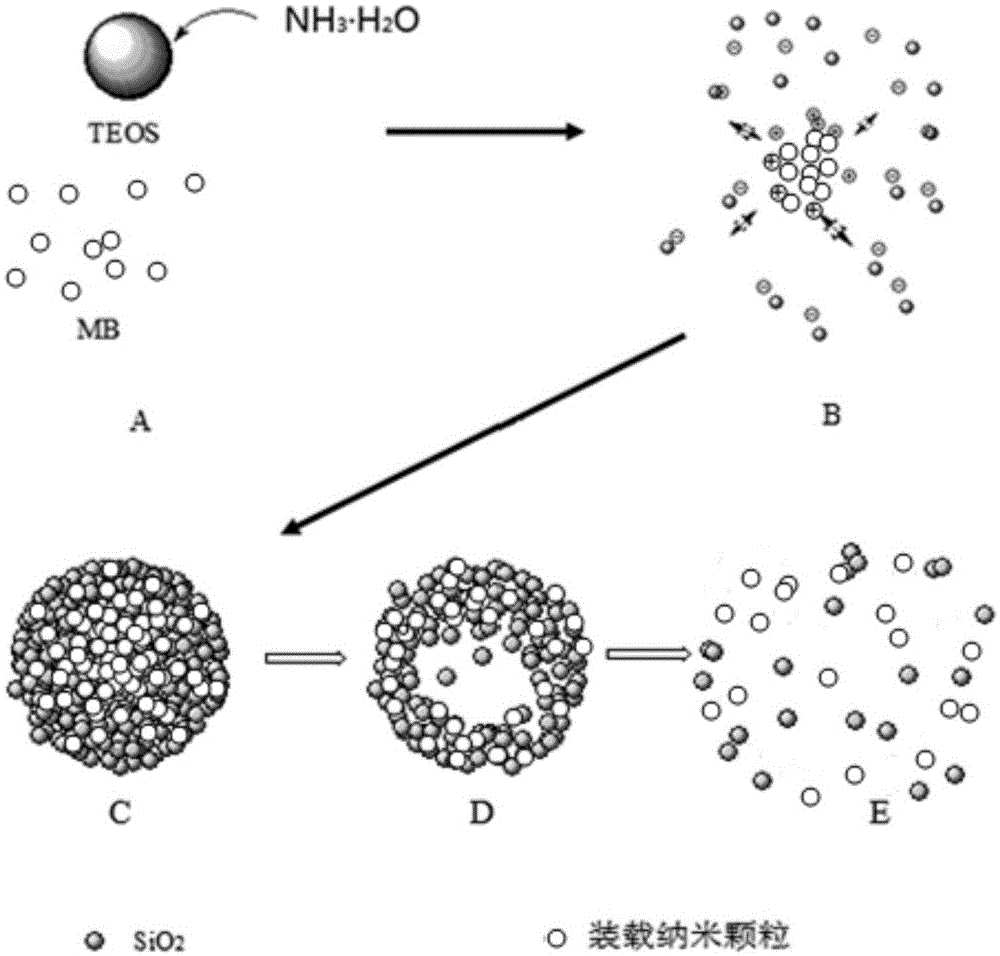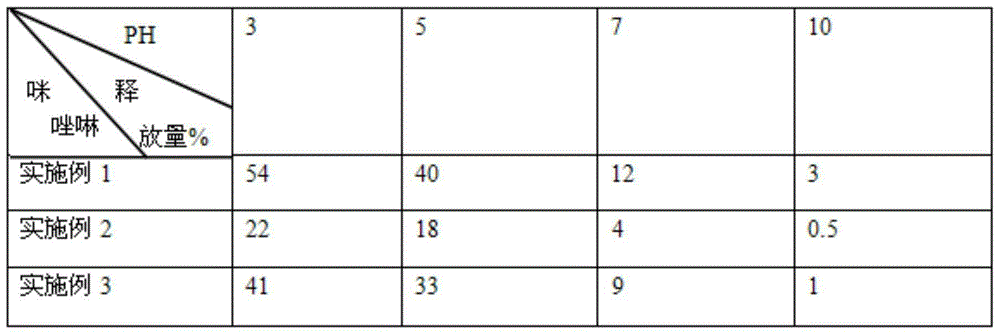PH-stimulus responsive nano-container and preparation method thereof
A nano-container and stimuli-response technology, applied in the field of material science, can solve the problems of increased toxicity, unfavorable excretion, and long residence time, and achieve the effects of reducing reaction steps, comprehensive and effective protection, and simple preparation methods
- Summary
- Abstract
- Description
- Claims
- Application Information
AI Technical Summary
Problems solved by technology
Method used
Image
Examples
Embodiment 1
[0022] 1. Add 10 mg of 1-hexyl-3-methyl-imidazolium chloride to 75 ml of ethanol, and disperse it uniformly with ultrasound.
[0023] Add 5ml of ammonia water to the solution to form an alkaline environment, stir vigorously with a mechanical stirrer, slowly add 160ul of TEOS (tetramethylsilane) dropwise at 25°C for hydrolysis, and react at room temperature for 24h. After the reaction was completed, centrifugation was performed to collect the solid, washed three times with ethanol, and vacuum-dried at 60° C. to obtain the drug-carrying molecule.
[0024] In order to study the release effect of the nano-container under neutral and acidic conditions, the present invention carried out the following experiments: the release curve of the nano-container was detected at 210 nm by ultraviolet spectroscopy: 4 mg of drug-loaded molecules were accurately weighed, the solid was placed in the dialysis membrane, The dialysis membrane with product is then placed in a cuvette with a sealed top...
Embodiment 2
[0026] 1. Add 10 mg of 1-hexyl-3-methyl-imidazolium chloride to 75 ml of ethanol, and disperse it uniformly with ultrasound.
[0027] Add 5ml of ammonia water to the solution to form an alkaline environment, stir vigorously with a mechanical stirrer, slowly add 480ul of TEOS (tetramethylsilane) dropwise at 25°C for hydrolysis, and react at room temperature for 24h. After the reaction was completed, centrifugation was performed to collect the solid, washed three times with ethanol, and vacuum-dried at 60° C. to obtain the drug-carrying molecule.
[0028] In order to study the release effect of the nano-container under neutral and acidic conditions, the present invention carried out the following experiments: the release curve of the nano-container was detected at 210 nm by ultraviolet spectroscopy: 4 mg of drug-loaded molecules were accurately weighed, the solid was placed in the dialysis membrane, The dialysis membrane with product is then placed in a cuvette with a sealed top...
Embodiment 3
[0030] 1. Add 30 mg of 1-hexyl-3-methyl-imidazolium chloride to 75 ml of ethanol, and disperse it uniformly with ultrasound.
[0031] Add 5ml of ammonia water to the solution to form an alkaline environment, stir vigorously with a mechanical stirrer, slowly add 480ul of TEOS (tetramethylsilane) dropwise at 25°C for hydrolysis, and react at room temperature for 24h. After the reaction was completed, centrifugation was performed to collect the solid, washed three times with ethanol, and vacuum-dried at 60° C. to obtain the drug-carrying molecule.
[0032] In order to study the release effect of the nano-container under neutral and acidic conditions, the present invention carried out the following experiments: the release curve of the nano-container was detected at 210 nm by ultraviolet spectroscopy: 4 mg of drug-loaded molecules were accurately weighed, the solid was placed in the dialysis membrane, The dialysis membrane with product is then placed in a cuvette with a sealed top...
PUM
 Login to View More
Login to View More Abstract
Description
Claims
Application Information
 Login to View More
Login to View More - R&D
- Intellectual Property
- Life Sciences
- Materials
- Tech Scout
- Unparalleled Data Quality
- Higher Quality Content
- 60% Fewer Hallucinations
Browse by: Latest US Patents, China's latest patents, Technical Efficacy Thesaurus, Application Domain, Technology Topic, Popular Technical Reports.
© 2025 PatSnap. All rights reserved.Legal|Privacy policy|Modern Slavery Act Transparency Statement|Sitemap|About US| Contact US: help@patsnap.com


